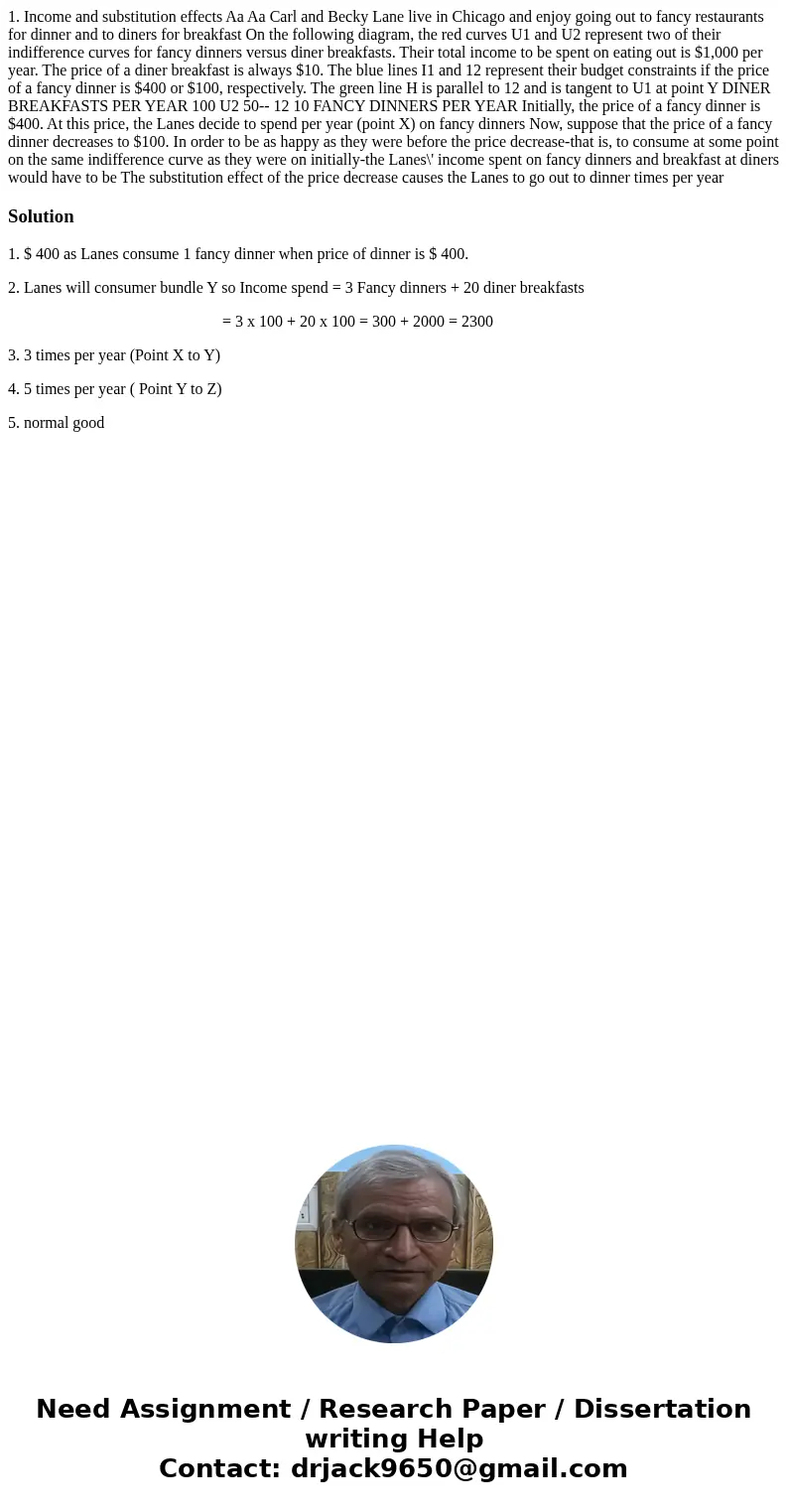1 Income and substitution effects Aa Aa Carl and Becky Lane
1. Income and substitution effects Aa Aa Carl and Becky Lane live in Chicago and enjoy going out to fancy restaurants for dinner and to diners for breakfast On the following diagram, the red curves U1 and U2 represent two of their indifference curves for fancy dinners versus diner breakfasts. Their total income to be spent on eating out is $1,000 per year. The price of a diner breakfast is always $10. The blue lines I1 and 12 represent their budget constraints if the price of a fancy dinner is $400 or $100, respectively. The green line H is parallel to 12 and is tangent to U1 at point Y DINER BREAKFASTS PER YEAR 100 U2 50-- 12 10 FANCY DINNERS PER YEAR Initially, the price of a fancy dinner is $400. At this price, the Lanes decide to spend per year (point X) on fancy dinners Now, suppose that the price of a fancy dinner decreases to $100. In order to be as happy as they were before the price decrease-that is, to consume at some point on the same indifference curve as they were on initially-the Lanes\' income spent on fancy dinners and breakfast at diners would have to be The substitution effect of the price decrease causes the Lanes to go out to dinner times per year 
Solution
1. $ 400 as Lanes consume 1 fancy dinner when price of dinner is $ 400.
2. Lanes will consumer bundle Y so Income spend = 3 Fancy dinners + 20 diner breakfasts
= 3 x 100 + 20 x 100 = 300 + 2000 = 2300
3. 3 times per year (Point X to Y)
4. 5 times per year ( Point Y to Z)
5. normal good

 Homework Sourse
Homework Sourse